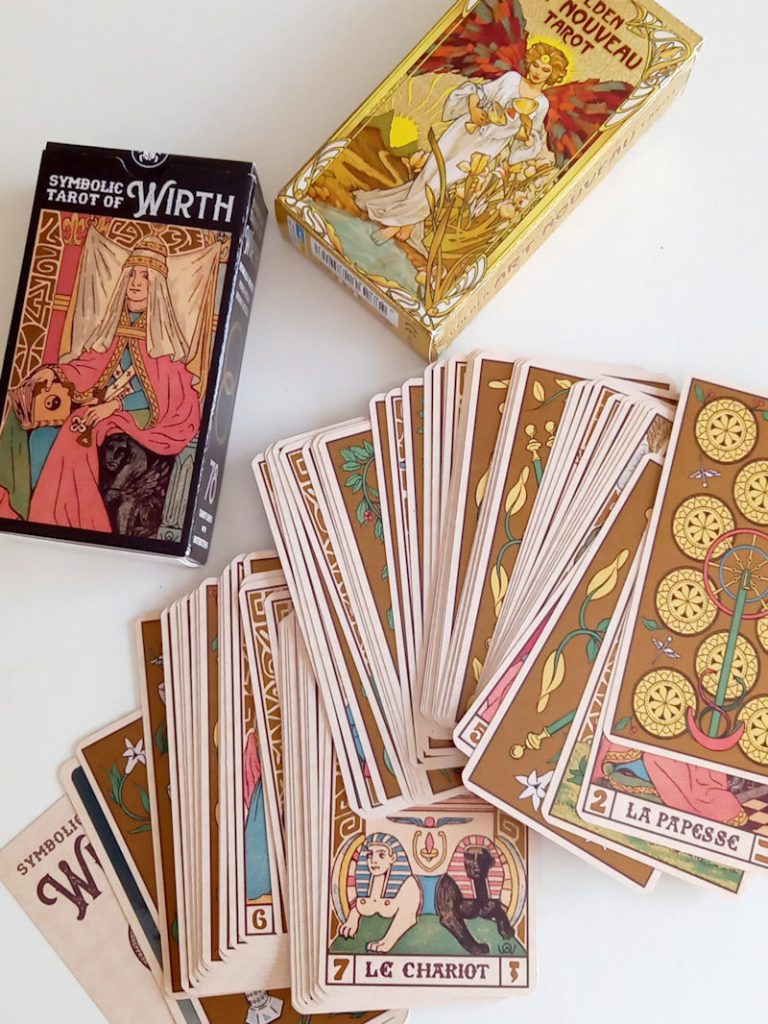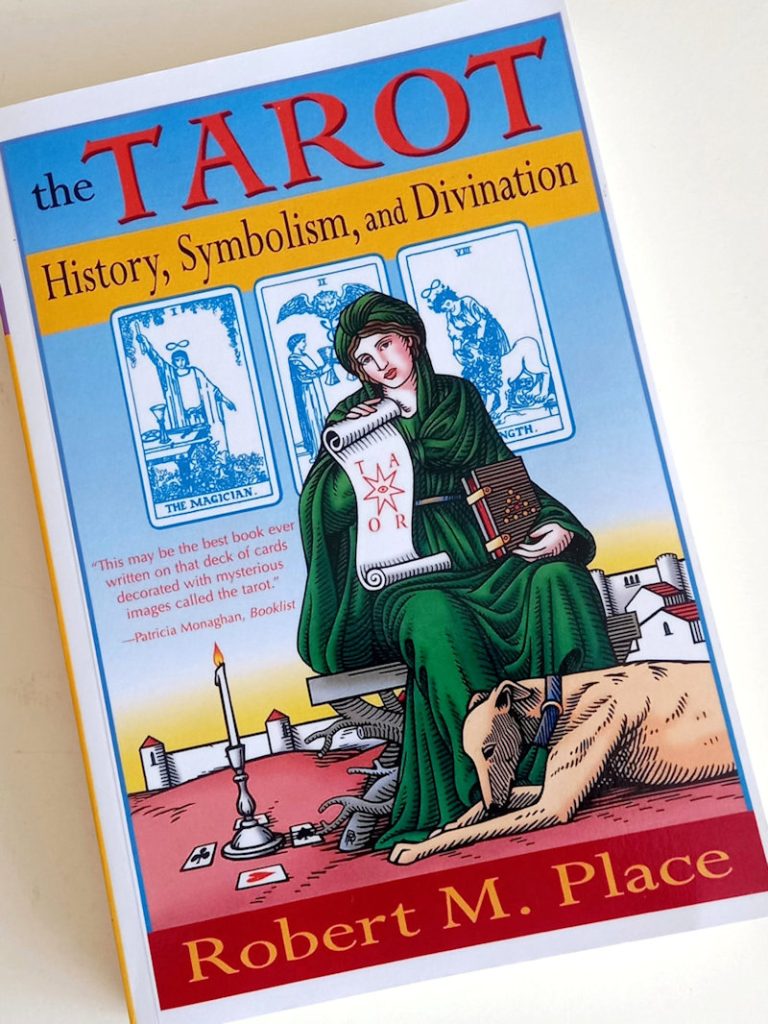Over the past 10-20 years, Tarot cards have gained significant popularity, frequently appearing not only in the occult realm of the Internet but also in popular movies and TV series, fiction books, and as a stylistic element of contemporary art.
Nevertheless, Tarot cards remain mysterious and multifaceted, giving rise to numerous legends not only about their origins but also about the iconographic significance of each card, as well as of the entire deck. For some, Tarot is a card game, for others – a mystical tool of divination, or a rich symbolic system for self-knowledge, allowing one to work with associations and archetypes. In this article, we will examine the origins of Tarot, the structure and characteristics of several decks, and will attempt to answer the question: should Tarot be perceived solely as a tool for self-discovery, or as a form of art?
The history of Tarot begins in 15th century southern Europe, in southern Italy. At that time, these cards were rarely used for fortune telling but primarily for a game called tarocchi. These decks were custom-made and lavishly illustrated, reflecting Renaissance culture. The cards later spread to France where the Marseille Tarot tradition developed in the 16th century – named after the city of Marseille, where these decks were primarily printed. The Marseille Tarot is considered one of the oldest well-preserved decks, but the oldest tarot deck is considered to be the Visconti-Sforza deck created in the mid-15th century.
However, until the 18th century, these decks weren’t widely used for fortune telling, serving more as playing cards or luxury items – especially those decks made to order. A shift toward a mystical vision of the Tarot occurred in the 18th century, when European occultists began to associate the Tarot with ancient secret knowledge, namely the Egyptian mysteries and Kabbalah, believing that the Tarot’s symbolism concealed ancient knowledge of self-discovery and self-improvement. By the late 19th and early 20th centuries, the Tarot had firmly established itself in the Western esoteric tradition, particularly thanks to the mystics of the Hermetic Order of the Golden Dawn, Arthur Edward Waite and Pamela Colman Smith who created perhaps the most famous Tarot deck, the Rider-Waite-Smith Tarot.
Today, however, interest in the Tarot extends beyond esotericism: the cards are used as a means of introspection, in art practice, and in cultural studies to analyze iconography, myths, and symbols. Besides the well-known Rider-Waite-Smith deck, it’s also worth mentioning the Thoth Tarot by Aleister Crowley and Frieda Harris, and the Wirth Tarot by Oswald Wirth.
Tarot Deck Structure
The classic Tarot deck – the Rider-Waite-Smith Tarot – consists of 78 cards:
• 22 Major Arcana – archetypal images (e.g., the Fool, the Empress, Death, the Sun, etc.) that reflect key stages of human experience.
• 56 Minor Arcana, divided into four suits (Swords, Cups, Wands, Pentacles), each symbolizing different areas of life: intellect, emotion, aspiration, and the material sphere.
Differences from the other decks mentioned above:
• Thoth Tarot – maintains the same structure as the Rider-Waite-Smith deck but the artwork of each card conveys a more abstract and multifaceted interpretation, while the classic deck is more concise and depicts a specific situation and a clear nar
• Thoth Tarot – maintains the same structure as the Rider-Waite-Smith deck but the artwork of each card conveys a more abstract and multifaceted interpretation, while the classic deck is more concise and depicts a specific situation and a clear narrative.
• The Wirth Tarot – created by the Swiss occultist Oswald Wirth and predates the Rider-Waite-Smith and Thoth decks. The original deck consists of only 22 cards, (that is, the Major Arcana) and is one of the first attempts to consciously position the Tarot not as a game or a means of fortune-telling, but as a systematic occult tool.
It’s also worth noting that contemporary artists are creating original decks that reflect personal or cultural themes, from mythology to pop culture. Most often, such decks are based on the Rider-Waite-Smith or Thoth traditions, but sometimes there are those that draw inspiration from the Marseille deck. Nevertheless, thanks to this, the Tarot becomes not only a tool for self-reflection but also a key item for artistic expression.
Card Reading
Regardless of the deck’s tradition, the Tarot reading is based on a combination of the cards’ symbolism, their placement in the layout, and the reader’s personal interpretation.
• Layouts determine the structure of the reading: most often, a three-card layout is used (for example, in the “past-present-future” layout), but five-card or ten-card layouts are also common – for example, as in the classic Celtic Cross.
• The meaning of the layout’s positions gives the cards a dynamic feel: for example, the same card in the “past” position will be interpreted differently than in the “present” position.
• Approaches to interpretation vary: some readers rely on the established traditional meanings of each card, others assign them their own meanings, relying more on intuition, as well as there are those who use the cards as an associative stimulus for a conversation with the client or with themselves. Experience and subjective perception play a key role: cards become a mirror, reflecting both the external situation and the internal state of a person.
Psychology or Art?
There are several approaches to the Tarot:
1. The Psychological Approach.
• The cards can serve as a tool for self-discovery and self-reflection. The symbols depicted on each card evoke associations and help one better understand one’s own feelings, desires, and fears;
• The iconography of the Tarot is built on the use of various archetypes, and, according to the analytical psychology of Carl Gustav Jung, archetypes are universal images of the collective unconscious. In this context, the Major Arcana can be seen as a visualization of these archetypes;
• In the modern tradition, the Tarot is often used as a method of projective psychology – for dialogue between the client and the reader or with oneself, as well as for discovering new perspectives.
2. The Artistic Approach
• Each deck is a work of art that combines symbolism, the style of the era, and the personal vision of the author. This tendency can be seen even in the early days of the Tarot, when each deck was made as an individual copy and considered a luxury item. For example, the Visconti-Sforza deck;
• Each card in the Tarot deck is rich in visual metaphors, open to individual perception, making each card like a miniature painting;
• Today, creating and collecting of Tarot decks have become independent artistic movements, involving not only individual enthusiasts but also entire communities of experts around the world, and old and rare decks are prized as museum pieces.
Conclusion
Tarot has come a long way – from a card game in southern Italy during the Renaissance to a complex symbolic system rooted in mythology and esotericism. Today, Tarot is a multilayered phenomenon: a historical artifact, a visual art, and a tool for self-discovery. Regardless of whether we perceive these cards as a tool for self-dialogue or as a purely aesthetic phenomenon, Tarot continues to fulfill its primary function – serving as a mediator between man and the world of symbols.




